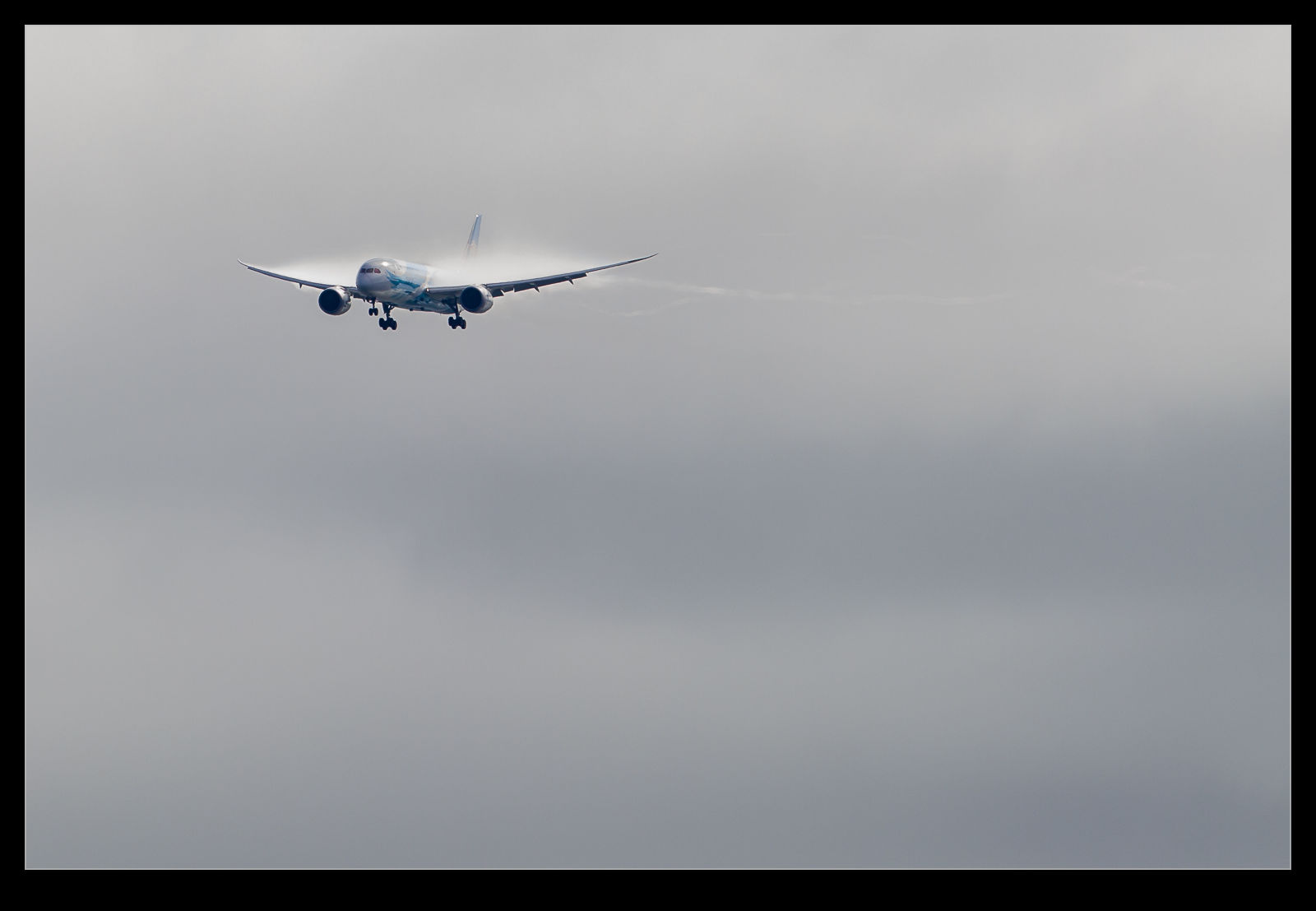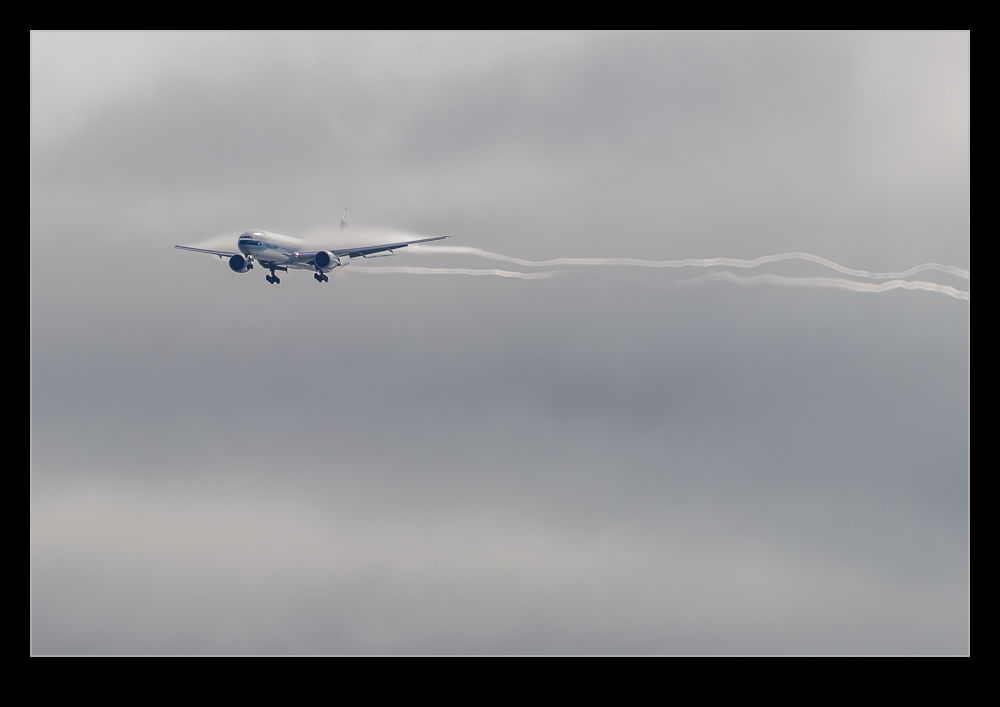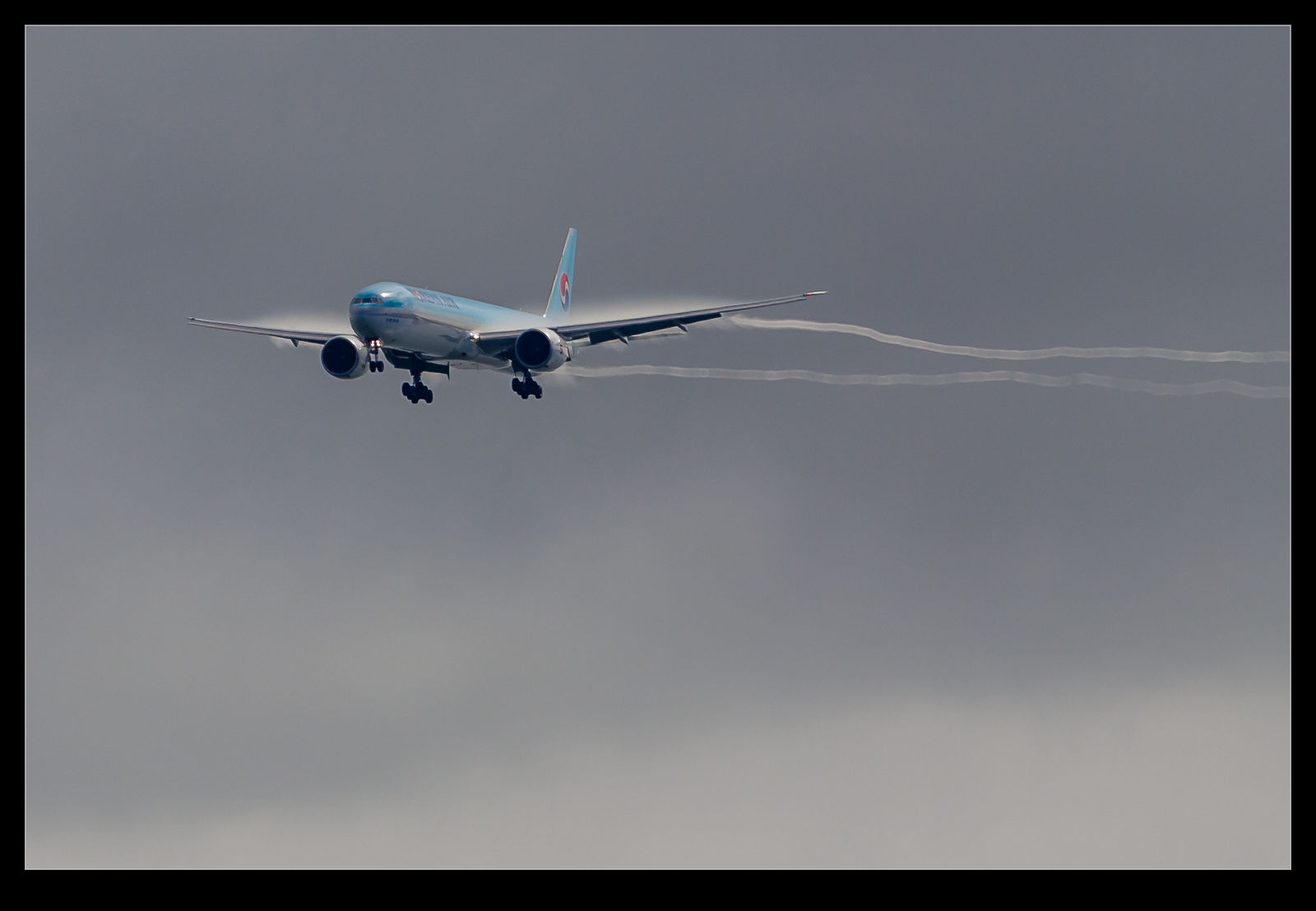 Moisture in the air is not always what you want when you are out shooting aircraft. However, it does have its benefits if there isn’t so much of it that everything is either obscured or gray. The weather conditions over San Francisco Bay can be very localized and, as the planes come down final approach, they can go through quite a variety. I was out hunting for Air Force One a while back and I got some good examples of this.
Moisture in the air is not always what you want when you are out shooting aircraft. However, it does have its benefits if there isn’t so much of it that everything is either obscured or gray. The weather conditions over San Francisco Bay can be very localized and, as the planes come down final approach, they can go through quite a variety. I was out hunting for Air Force One a while back and I got some good examples of this.
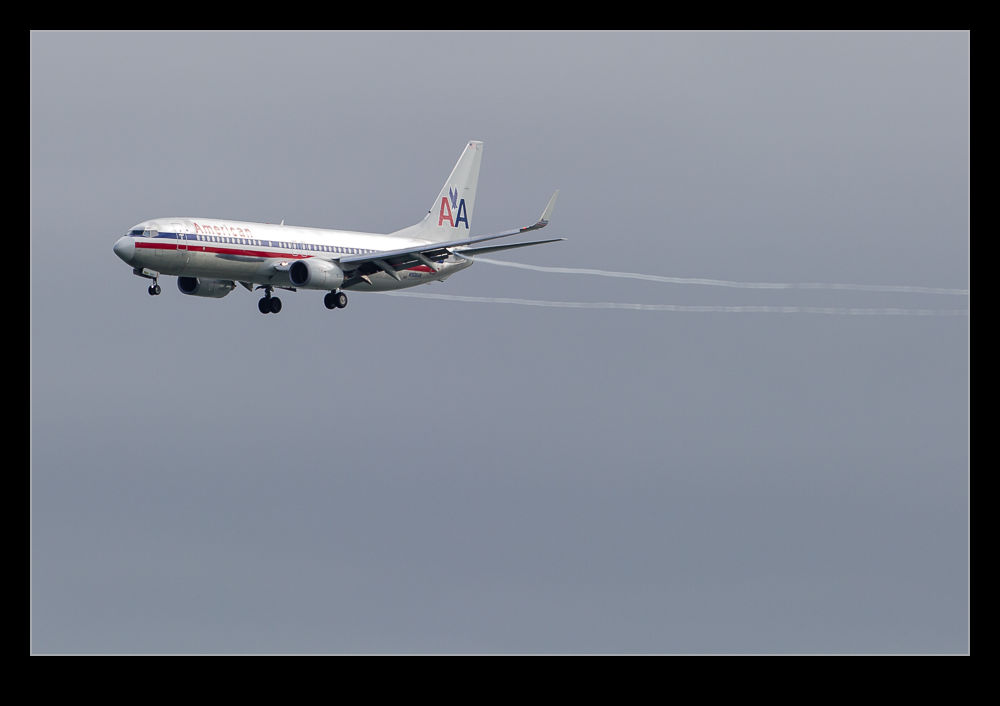 The weather at SFO was actually quite nice (although not when Air Force one departed as I have previously written about). The sun was out and the sky was pretty clear. In fact, there was quite a troubling amount of heat haze. However, once you got towards the south end of the bay, there was pretty solid cloud cover. The planes coming in were in full IMC for a good portion of their approach. Somewhere in the region between Coyote Point and the San Mateo Bridge they would break out of the cloud cover. Then, for the next mile or so, they were in the clear but still in very humid conditions.
The weather at SFO was actually quite nice (although not when Air Force one departed as I have previously written about). The sun was out and the sky was pretty clear. In fact, there was quite a troubling amount of heat haze. However, once you got towards the south end of the bay, there was pretty solid cloud cover. The planes coming in were in full IMC for a good portion of their approach. Somewhere in the region between Coyote Point and the San Mateo Bridge they would break out of the cloud cover. Then, for the next mile or so, they were in the clear but still in very humid conditions.
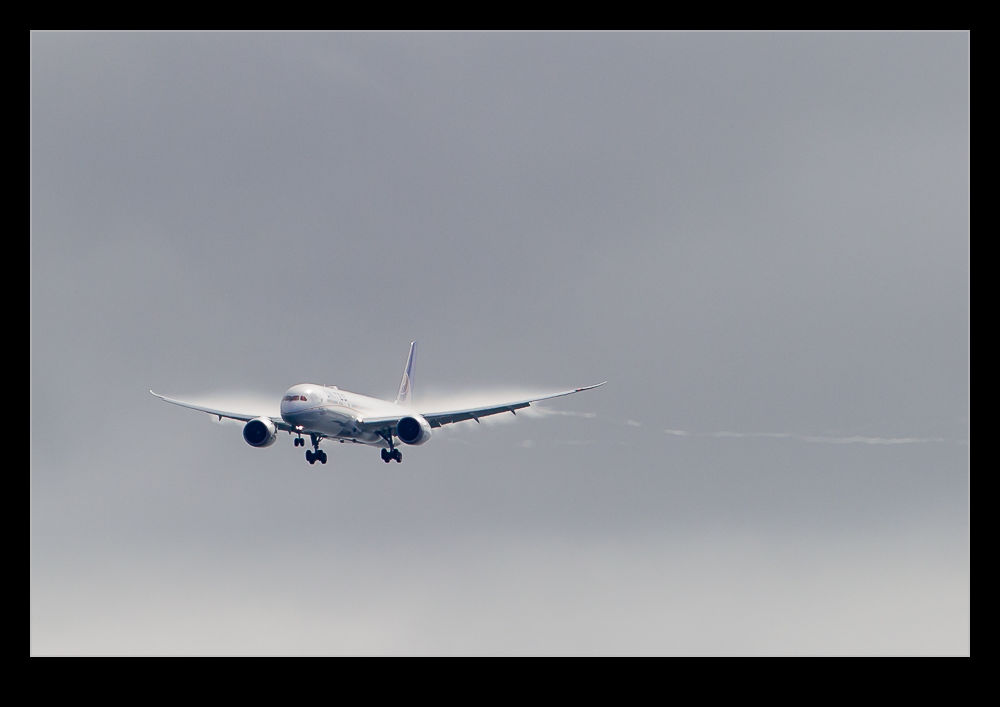 The result of this humidity was a lot of vapor forming up over the wings. The low speed and high lift configuration made the wings a good place to get cloud formations as the moist air passed over them. Additionally, the trailing vortices were showing up well as a result of the condensing moisture in them too. For quite a while, each aircraft showed similar patterns as it descended. The widebodies seemed to be better for showing this but that might just be a function of them being easier to see further away when the effect was most pronounced. The closer they got to the field, the less the effect until it was pretty much gone when they were on final approach.
The result of this humidity was a lot of vapor forming up over the wings. The low speed and high lift configuration made the wings a good place to get cloud formations as the moist air passed over them. Additionally, the trailing vortices were showing up well as a result of the condensing moisture in them too. For quite a while, each aircraft showed similar patterns as it descended. The widebodies seemed to be better for showing this but that might just be a function of them being easier to see further away when the effect was most pronounced. The closer they got to the field, the less the effect until it was pretty much gone when they were on final approach.
